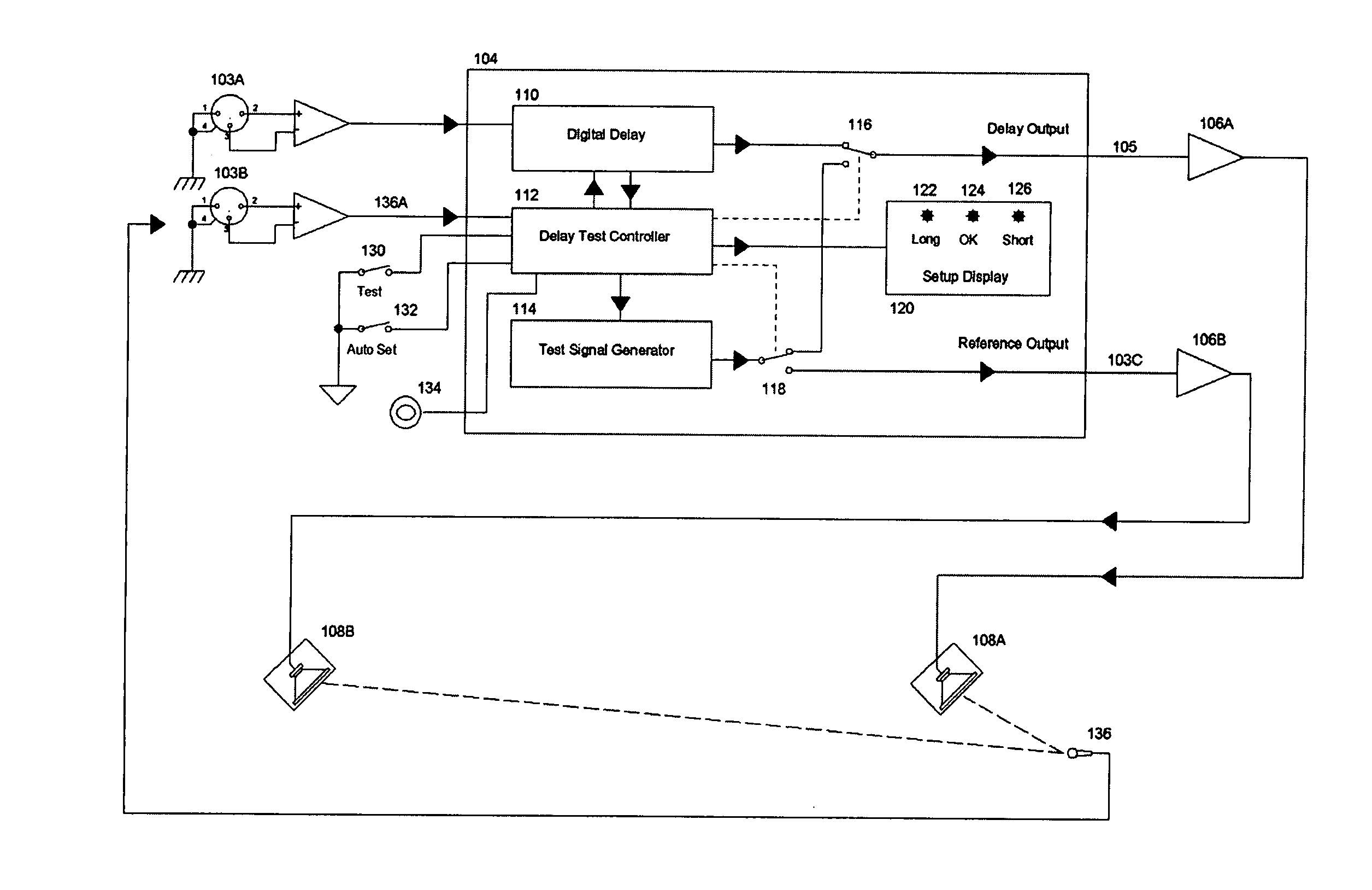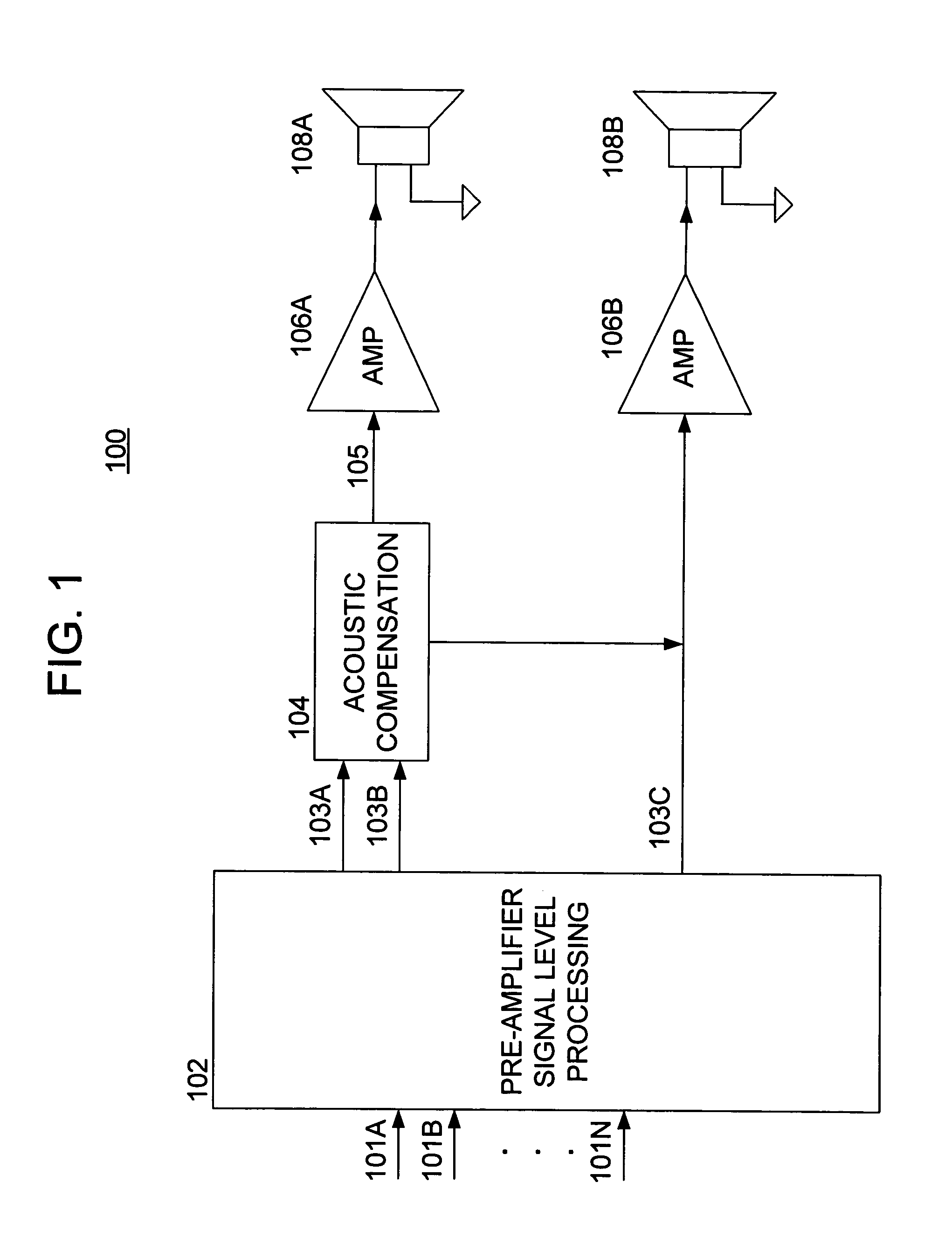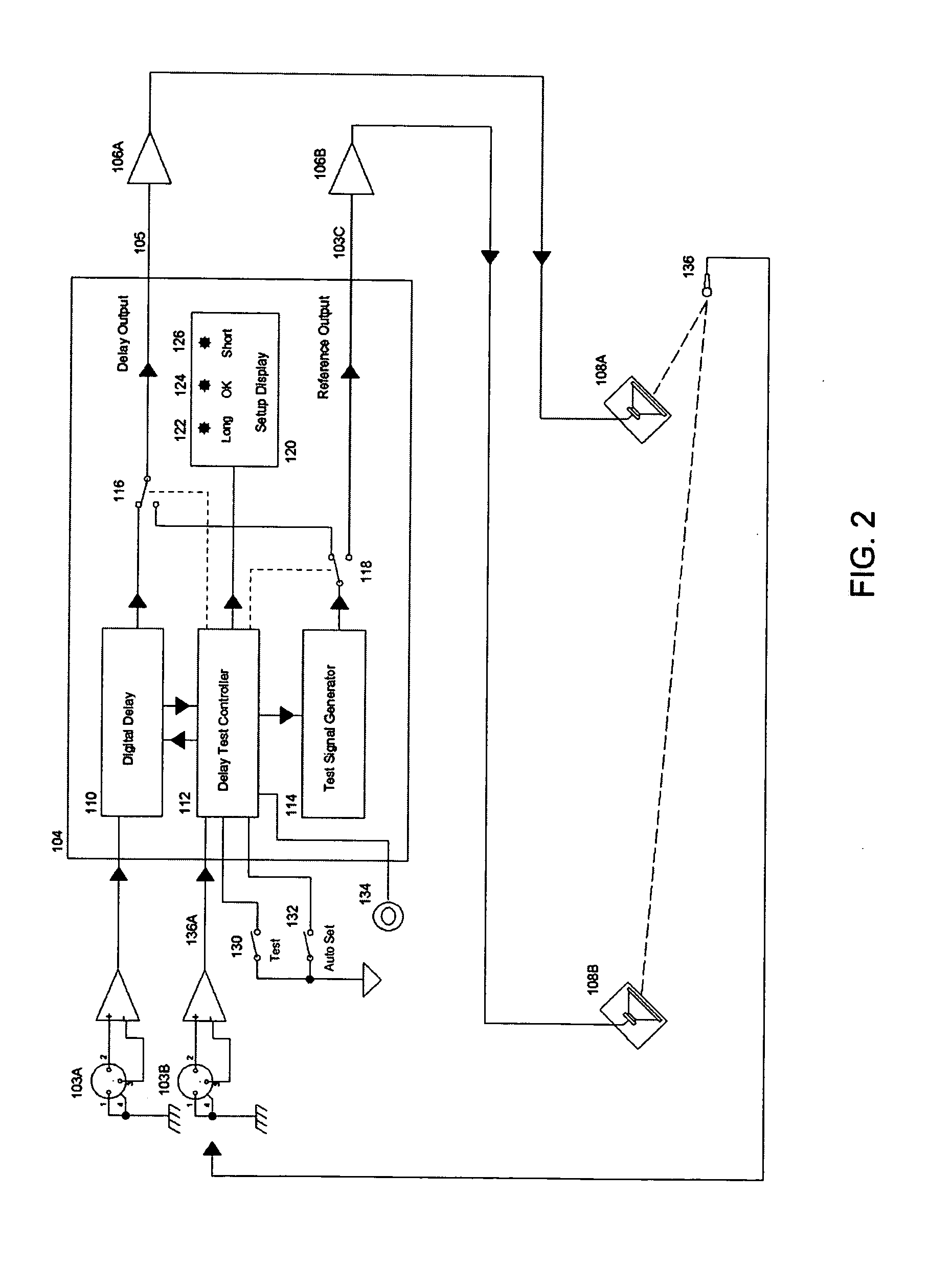Methods and apparatus for sound compensation in an acoustic environment
a technology of acoustic environment and sound compensation, which is applied in the direction of electrical transducers, transducer details, electrical apparatus, etc., can solve the problems of difficult decoding of audio information into understandable speech by the listener's brain, and affecting the listening experien
- Summary
- Abstract
- Description
- Claims
- Application Information
AI Technical Summary
Benefits of technology
Problems solved by technology
Method used
Image
Examples
Embodiment Construction
[0027] Referring now to the drawings, wherein like numerals indicate like elements, there is shown in FIG. 1 a block diagram of an audio system 100 in accordance with one or more aspects of the present invention. The basic functionality of the audio system 100 is to compensate for acoustic delays of the sound waves emanating from loudspeakers of the system, which delays cause sound smear.
[0028] The system 100 includes a pre-amplifier signal level processing unit 102, and acoustic compensation unit 104, a plurality of amplifiers 106, and a corresponding plurality of loudspeakers 108. As has been discussed hereinabove, one of the loudspeakers 108B represents one or more primary acoustic loudspeakers that are used to originate sound waves into an acoustic space for the enjoyment of an audience. The other loudspeaker 108A represents one or more secondary loudspeakers that are disposed some distance away from the primary loudspeaker 108B, for example, to provide additional sound reinfor...
PUM
 Login to view more
Login to view more Abstract
Description
Claims
Application Information
 Login to view more
Login to view more - R&D Engineer
- R&D Manager
- IP Professional
- Industry Leading Data Capabilities
- Powerful AI technology
- Patent DNA Extraction
Browse by: Latest US Patents, China's latest patents, Technical Efficacy Thesaurus, Application Domain, Technology Topic.
© 2024 PatSnap. All rights reserved.Legal|Privacy policy|Modern Slavery Act Transparency Statement|Sitemap



